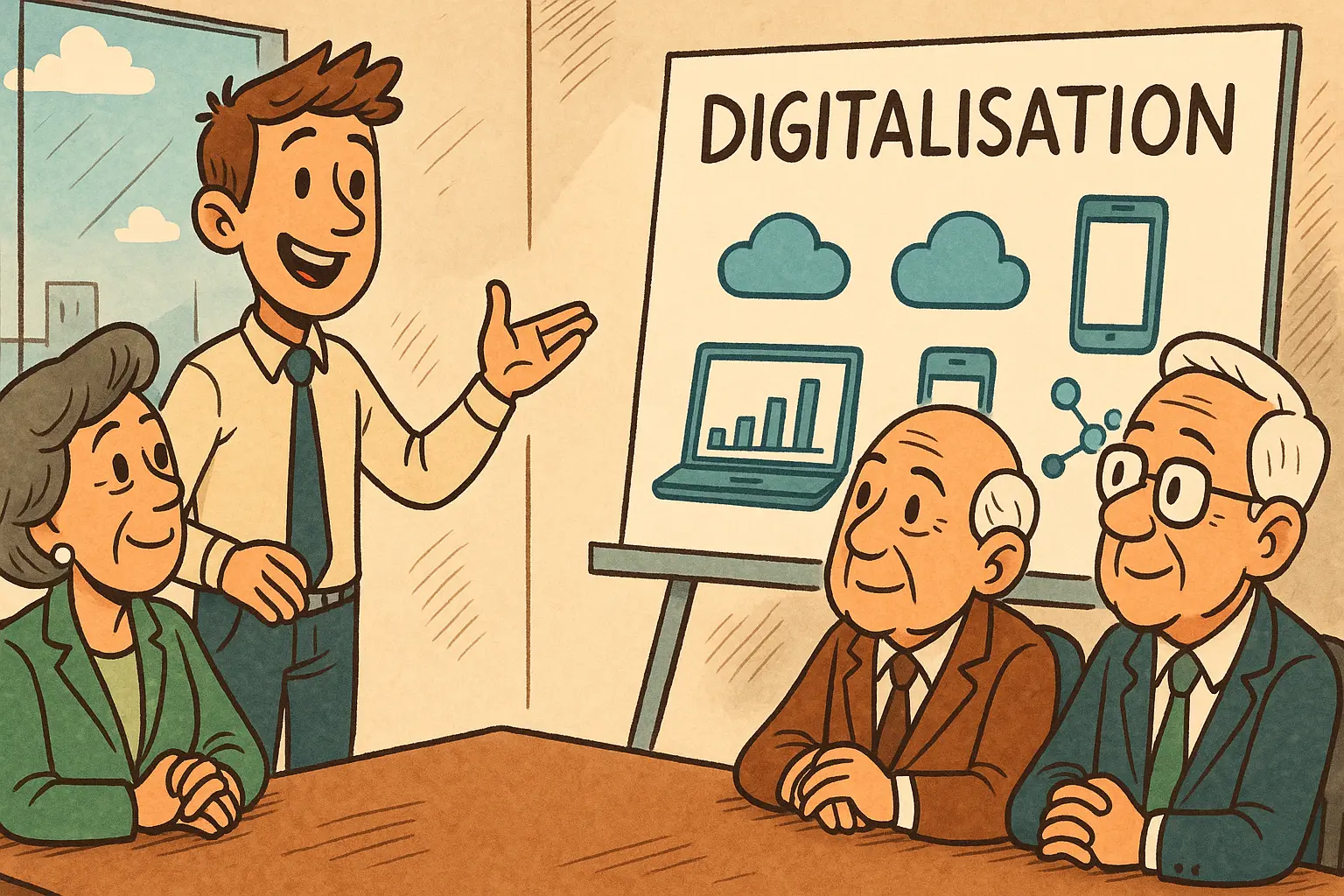Kamil Szymański,
23/04/2025
Construction industry digitalisation - fashion or necessity?

We live in times where fierce competition for customers plays out in every industry. To remain competitive, it’s no longer possible to ignore the changes that have been reshaping business for years-and have accelerated dramatically in the past five.
The COVID-19 pandemic, unlike any other event, forced a massive shift of businesses into the digital world. Today, the validity of that shift is no longer questioned. After the chaos of the pandemic, which pushed many companies to make decisions under pressure, the time has come to assess the situation with a cooler head. But does that mean we can go back to “the old ways”?
Definitely not.
Taking a step back can be costly and risky. Technology is no longer just a support tool. It’s the foundation of the modern business. A tool that helps companies grow, outpace the competition, and eliminate unnecessary costs.
What does digitalisation really bring to construction?
There are countless benefits to digitalisation and automation. When processes are moved into the digital world, they become more accessible to employees and help standardise operations across teams. Standardised processes mean predictability, the ability to use templates, and emergency plans for unexpected situations. In the long term, this leads to cost reduction and improved project profitability.
Examples of systems used in the construction industry:
- ERP systems - General-purpose tools for managing a business: finance, production, HR, customer relations. Designed for a wide market, they include many modules but are rarely fully tailored to construction needs.
- BIM tools - Essential for complex projects. They enable 3D modeling with detailed information about every element. These tools improve collaboration, detect clashes early, and reduce execution errors.
- Specialised operational platforms - Focused on specific tasks like logistics, equipment, or workforce management. Their selection depends on the company’s profile (general contractor, subcontractor, modular construction, geotechnics, etc.).
- CRM systems - Tools for managing client relationships, supporting sales and marketing activities.
There are many tools on the market for a broad audience-but the most valuable ones are built for the specific needs of your industry.
Why is construction digitalisation an investment, not a cost?
It’s not a trend-it’s an opportunity to cut costs, optimise processes, and increase project profitability.
- As many as 50-90% of projects are delayed
- Costs can increase by 20-30%, in extreme cases up to 80%
- The most common reason? Human error-at every stage
Implementing consistent processes and using proper tools helps reduce errors to nearly zero. But no technology is a magic wand-it takes time and clear, measurable goals.
What challenges might come with implementing a new IT system?
Implementation is a process, not a one-time event. Adapting to a new technology can take 3-6 months-and full fluency up to a year.
The first challenge? Team mindset.
Change breeds resistance, so it’s important to communicate the value to every group of users:
- “Report a fault in just a few clicks”
- “See all current shipments in one place”
- “This form will walk you through the inspection process”
Second issue: Lack of measurable goals.
Before implementation, define what problems you want to solve and how success will be measured.
Third: Choosing the wrong provider.
Lack of support, closed architecture, limited access to consulting-these are real risks. That’s why it’s crucial to:
- Choose industry-specific tools
- Clarify implementation support
- Ask about the product roadmap
- Talk to current clients for honest feedback
Is digitalisation expensive?
In the past-yes. Building your own system was often a multi-million investment.
Today? SaaS (Software as a Service) changes the game.
No infrastructure, no in-house IT, no big budgets. Just a monthly fee for a constantly improving product. The cost of building a custom system could cover dozens of years of SaaS use.
Example?
MuoTec - a platform for construction companies that:
- supports equipment and fleet management
- simplifies fault reporting
- streamlines inspections
- helps plan and track logistics
- sends real-time notifications
Cost? Lower than a single day of downtime.
Try it for yourself: Cost Calculator
How to choose the right solution?
Every company is different.
Before you decide:
- Identify the most common issues - where are you losing time or money?
- Set your implementation goal - what do you want to improve first: logistics, equipment, communication?
- Don’t rely on one tool, but don’t overdo it either - too many tools = chaos. One tool may not be enough.
- Choose tools built for your industry - they solve your everyday challenges better.
Conclusion
Today, digitalisation isn’t a luxury - it’s a necessity.
And with platforms like MuoTec, it’s accessible to companies of any size.
If you:
- want to reduce delays and downtime
- care about better organisation and resource use
- aim to build repeatable, predictable processes
- seek a system that grows with your business
…then it’s time to explore your options.
This might be the right moment to give digitalisation a chance-on your own terms.
Have questions? Want to discuss how technology can support your construction business?
Leave your contact - we’ll get back to you within 48 hours and help you choose the right solution.
Work smart and effectively - we can help you with that
MuoTec is the next-generation platform built for construction companies ready to reduce downtime, simplify logistics, and take control of their operations. Schedule a personalized demo and see how we can support your goals from day one.
- Schedule a personalized demo and see MuoTec in action
- Ask a question — we're here to help
- Discuss partnership opportunities with our team
- We respond to every message within 24 hours
